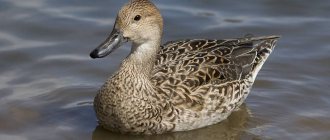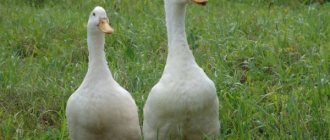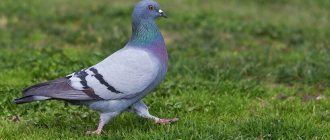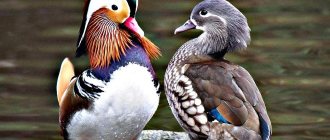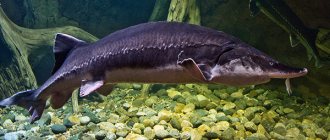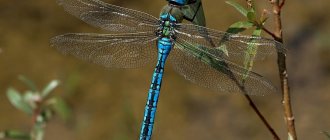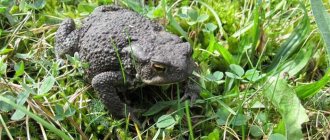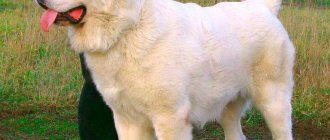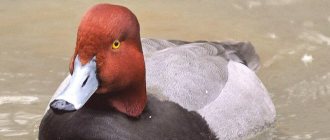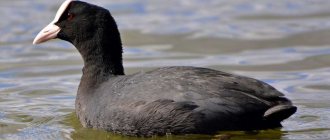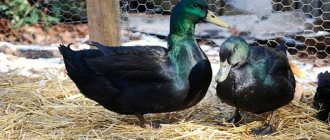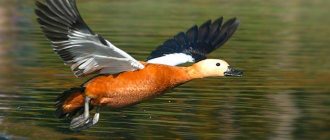- Wild animals
- >>
- Birds
The mallard is a very famous and abundant duck population on the planet. It can be seen in almost any body of water. It is larger than all wild ducks and therefore often becomes the object of sport, and in some cases, commercial hunting. Most modern duck breeds have been developed through selection from wild mallards, with the exception of Muscat breeds. This is an omnivorous bird, it easily adapts to various living conditions and lives on all continents except Antarctica. Let's get to know her better.
Origin of the species and description
Photo: Mallard
Mallards are one of the many bird species originally described by Carl Linnaeus in the 10th edition of his System of Nature in 1758. He gave him two binomial names: Anas platyrhynchos + Anas boschas. The scientific name comes from the Latin Anas - “duck” and the ancient Greek πλατυρυγχος - “with a wide beak”.
The name "Mallard" originally applied to any wild drake, and is sometimes still used that way. These birds often interbreed with their closest relatives in the genus Anas, resulting in various hybrids. This is quite unusual among such different species. This may be because the mallard evolved very quickly and recently, at the end of the Late Pleistocene.
Fun fact: Genetic analysis has shown that some mallards are closer to their Indo-Pacific relatives, while others are related to their American cousins. Mitochondrial DNA data for the D-loop sequence suggests that mallards may have evolved primarily from areas of Siberia. Bird bones are found in the food remains of ancient people and other deposits.
Mallards differ in their mitochondrial DNA between North American and Eurasian populations, but the nuclear genome reveals a noticeable lack of genetic structure. Additionally, the lack of morphological differences between Old World mallards and New World mallards demonstrates the extent to which the genome is distributed between them such that birds such as the Chinese spotted-billed duck are very similar to the Old World mallard, and birds such as the Hawaiian duck are very similar to the Old World mallard. similar to the New World mallard.
How do ducklings develop?
After the chicks hatch from the egg, they try not to leave the hen one step, because at this time they are easy prey for the enemy. The duck is a good mother, as she closely monitors each chick. After birth, she does not allow babies near water for a long time, because at the beginning of life they do not have the ability to swim. The first skill they need to learn is to tear holes with their paws so that in the future they can easily get food, such as worms, on their own. When the chicks get stronger, the female will take them to the water and give them their first swimming lessons.
At the beginning of life, chicks usually feed on boiled pearl barley. For more calories, you can add chicken eggs to the porridge; this will allow the bird to gain weight faster. Experienced poultry farmers advise adding bedding to the wild duck’s diet from the second month of life, gradually replacing all meals with it. It is important to add vitamins to the diet from the first days of life. The presence of fortified supplements will be an excellent prevention of many diseases, such as rickets. Its health will depend on how well the bird eats.
Already at 2-3 weeks of age, many ducklings are ready for independent feeding and switch to plant food - duckweed. In the period from 4-6 weeks, the chicks begin to molt - down is replaced by feathers. The process begins with the wings, then moves to the back and chest.
Appearance and features
Photo: Mallard drake
The mallard (Anas platyrhynchos) is a bird that is part of the duck family (Anatidae). This is a medium-sized species of waterfowl that is slightly heavier than most other ducks. Its length is 50–65 cm, of which the body makes up about two-thirds. The mallard has a wingspan of 81–98 cm and weighs 0.72–1.58. kg. Among the standard measurements, the wing chord is from 25.7 to 30.6 cm, the bill is from 4.4 to 6.1 cm, and the tarsus is from 4.1 to 4.8 cm.
Mallards have well-defined sexual dimorphism. The male's breed is unmistakable by his glossy bottle green head with a white collar that separates the purple-tinged brown chest from the head, greyish-brown wings and faded gray belly. The rear of the male is black, with white tail feathers edged in dark color. The male has a yellowish-orange bill tipped with a black spot, while the female's bill is darker and ranges from dark to mottled orange or brown.
Video: Mallard
The female mallard is predominantly mottled, with each individual feather showing a sharp contrast of color. Both sexes have distinct iridescent purple-blue underwing feathers with white edges that are prominent in flight or at rest, but are temporarily shed during the annual molt.
Fun Fact: Mallards tend to mate with other duck species, resulting in hybridization and mixing of species. They are a descendant of domestic ducks. In addition, mallards obtained from wild populations have been repeatedly used to rejuvenate domestic ducks or to breed new species.
After hatching, the duckling's plumage is yellow on the underside and face and black on the back (with yellow spots) all the way to the top and back of the head. Its legs and beak are black. As it approaches fledging, the duckling begins to turn gray, more like the female, although more striped, and its legs lose a dark gray color. At the age of three to four months, the duckling begins to fly, because its wings are fully developed.
Now you know what a wild mallard looks like. Let's see where this interesting bird lives and what it eats.
Main characteristics
| Characteristic | Description |
| Weight of an adult drake at the beginning of summer early autumn | 1.5 kg 2.0 kg |
| Weight of an adult female | 0.7–1.4 kg |
| Body length | 0.6 m |
| Wingspan | 1m |
| Drake wing length | 0.28 m |
| Duck wing length | 0.26 m |
Where does the mallard live?
Photo: Mallard duck
The mallard is found throughout the northern hemisphere, from Europe to Asia and North America. In North America, it is absent only in the far north in the tundra regions from Canada to Maine and east to Nova Scotia. Its North American distribution center is in the so-called prairie region of North and South Dakota, Manitoba and Saskatchewan. In Europe, there are no mallards only in the highlands, in Scandinavia and in the strip of tundra in Russia. Distributed in Siberia north to Salekhard, the Lower Tunguska, the Taigonos Peninsula and Northern Kamchatka.
The mallard was introduced to Australia and New Zealand. It is found wherever the climate corresponds to its distribution in the northern hemisphere. Mallards appeared in Australia no earlier than 1862 and spread across the Australian continent, especially since the 1950s. They are relatively rare due to the climatic characteristics of this continent. Mainly inhabits Tasmania, southeast and some areas in southwest Australia. The bird invades urban areas or agricultural landscapes and is rarely observed in regions where people are not densely populated. It is considered an invasive species that disrupts the ecosystem.
The mallard is still common in open valleys up to altitudes of 1000 m, the highest nesting sites have been recorded in places around 2000 m. In Asia, the range extends to the east of the Himalayas. The bird winters on the plains of northern India and southern China. In addition, the mallard's range includes Iran, Afghanistan, and outside the mainland the birds nest on the Aleutian, Kuril, Commander, and Japanese islands, as well as in Hawaii, Iceland and Greenland. Prefers wetlands where highly productive waters produce large amounts of vegetation. Wetlands also produce large quantities of aquatic invertebrates that mallards feed on.
What does a mallard eat?
Photo: Mallard bird
The mallard is undemanding when it comes to food. It is an omnivorous species that eats whatever it can digest and obtain without much effort. New food sources are quickly discovered and exploited immediately.
Mallard duck food consists mainly of plant substances:
- seeds;
- fruits;
- green algae;
- coastal and terrestrial plants.
The diet also includes:
- shellfish;
- larvae;
- small crabs;
- tadpoles;
- small fish;
- frogs;
- worms;
- snails
The composition of food is subject to seasonal fluctuations. Central European mallards live on plant foods during the breeding season. These are seeds, overwintering green parts of plants, and then fresh germinating greens. By the time the chicks are born, they find not only abundant plant food, but also abundant animal food in the form of insects and their larvae. However, mallard chicks do not specialize in a particular diet, finding sufficient nutrients in the environment.
Although the influence of animal protein on the development of young animals is undeniable. Young mallards that eat plenty of animal protein exhibit much higher growth rates than those that primarily eat vegetables. As soon as the young chicks fledge, mallards increasingly search for food in the fields. They especially love unripe cereal grains. In the fall, mallards eat acorns and other nuts.
Fun Fact: Expanding food ranges include potatoes, introduced from South America. In Britain, this eating habit first appeared during the harsh winters between 1837 and 1855. When farmers threw rotting potatoes into the field.
In feeding areas, mallards also sometimes eat bread and kitchen waste. Although she is generally very adaptable in her diet, she does not eat salty plants. In Greenland, for example, mallard ducks feed almost exclusively on marine molluscs.
Raising ducks at home
This is the best option for those who do not want to hunt. To do this, birds need to create conditions that are as close to natural as possible. Drakes and females need water, so if there is no natural pond near the house, you will have to create an artificial one. Otherwise, the mallards will not gain the required weight.
The food given to mallards is no different from that given to domestic ducks. In order for the bird to quickly gain weight, it is given fish . If the mallard is kept in an enclosure, you need to place a container with sand in it. The diet description is approximately as follows:
- Corn.
- Grass.
- Roots.
- Duckweed, algae.
- Vitamin supplements.
- Insects.
Features of character and lifestyle
Photo: Mallard wild duck
Mallards have about 10,000 feathers covering their down, which protect them from moisture and cold. They lubricate this plumage to prevent water from penetrating through it. Glands at the base of the tail provide special fat. The duck takes this lubricant with its beak and rubs it into its plumage. On the water, ducks float on a cushion of air. Air remains between the feathers and down. The trapped layer of air prevents the body from losing heat.
In search of food below the surface of the water, mallards dive headfirst, striking the surface of the water with their wings and then capsizing. This position of the body with the tail rising vertically from the water looks very funny. At the same time, they search for food at the bottom at a depth of about half a meter. They bite off parts of plants with their beaks and at the same time push the water they also grabbed out. Parts of the beak act like a sieve in which food gets stuck.
Interesting fact: Ducks' feet never get cold because they lack nerve endings and blood vessels. This helps ducks move calmly on ice and snow without feeling the cold.
The bird's flight is fast and extremely noisy. When flapping its wings, the mallard often makes ringing sounds, by which you can recognize a duck even without seeing it visually. In flying individuals, white stripes on the wing liners are clearly visible. The takeoff of a mallard from the surface of the water is quite skillful. Can move tens of meters underwater. On land, she waddles from side to side, but the wounded woman is able to move quickly.
After the breeding season, mallards form flocks and migrate from northern latitudes to warmer southern areas. There they wait for spring and feed until the breeding season begins again. Some mallards, however, may choose to remain over the winter in areas where food and shelter are plentiful. These mallards constitute resident, non-migratory populations.
Nutrition
In terms of food, these birds are extremely unpretentious. Thanks to this feature, they quickly adapt to new living conditions. They try to feed in shallow water, where they can pass water through the horny plates on their beak, filtering out food of animal and plant origin.
The diet of these amazing birds includes:
- duckweed;
- hornwort;
- insects;
- small intervertebral;
- small fish;
- mosquito larvae;
- tadpoles;
- frogs;
- shellfish
Often on a pond you can catch a bird with its tail up. It is at this time that the mallard plucks aquatic plants and looks for food in shallow water. They are not capable of diving to great depths, but they can dive down to 30-35 cm. In early spring, when most of the reservoir is still covered with ice, mallards try to stay in the ice holes that are located in the center.
Birds that do not go to winter usually eat almost plant foods, since it is almost impossible to get insects and amphibians at this time. In some areas in the fall, mallards are happy to visit fields where the harvest was previously harvested, where grains of wheat, oats, rye, millet, etc. are collected.
Social structure and reproduction
Photo: Mallard chicks
Resident mallards form pairs in October and November in the northern hemisphere, and migratory birds form pairs in the spring. Females lay eggs at the beginning of the nesting season, which occurs around the beginning of spring. Together, pairs search for a nesting site, which can be located on the shore, but sometimes two or three kilometers from the water.
The choice of nest site adapts to the circumstances of each habitat. In lowland areas, nests are found in pastures, near lakes with pronounced vegetation, and in meadows. In forests they can also inhabit hollows. The nest itself is a simple, shallow depression, which the female fills with coarse branches. After building the nest, the drake leaves the duck and joins other males in anticipation of the molting period.
Interesting fact: The female lays 8-13 creamy white and greenish-tinged eggs without spots, one egg per day, starting in March. If the first four eggs left open remain unaffected by predators, the duck will continue to lay eggs in that nest and cover the eggs by leaving the nest for a short time.
The eggs are about 58 mm long and 32 mm wide. Incubation begins when the laying is almost complete. The incubation period takes 27–28 days, and fledging takes 50–60 days. Ducklings are able to swim as soon as they hatch. They instinctively stay close to their mother not only for warmth and protection, but also to learn and remember their habitat and where to find food. When ducklings become capable of flight, they memorize their traditional migration routes.
Hunting for wild ducks
Mallard meat is tasty and nutritious. In autumn, birds gain weight well, which is good for hunters. Wild birds behave extremely carefully in natural conditions, so you will have to try hard to get a trophy. They look out for mallards on ponds, but it is impossible to get close to them - if they detect the slightest danger, they will fly away.
To trap birds, a hut is built in advance on the shore from reeds and branches. A hunter hides in this improvised structure. If they get close, you can attract them with a special quack decoy. You can also put a rubber stuffed drake on the water. As a rule, when ducks see or hear their relatives, they dive into the water.
If you accidentally stumble upon a duck nest, there is no need to destroy it and take the eggs. It is very difficult for a female to survive such a loss . Also in the fall there is no need to hunt female ducks , since at this time they hatch their offspring. Fortunately, it is not difficult to distinguish a female from a drake. It is not worth hunting mallards in the spring - at this time they have not yet reached the required weight.
Natural enemies of the mallard
Photo: Mallard duck
Mallards of all ages (but especially young ones) often encounter a wide variety of predators, including domesticated ones. The most dangerous natural predators of adult mallards are foxes (which most often attack nesting females. As well as the fastest or larger birds of prey: peregrine falcons, hawks, golden eagles, eagles, hooded crows, or sea eagles, large gulls, eagle owls. The list of birds of prey consists no less than 25 species and the same number of predatory mammals, not counting several more bird and mammal predators that threaten mallard eggs and chicks.
Mallards are also prey to predators such as:
- gray heron;
- minks;
- catfish;
- wild cats;
- northern pike;
- raccoon dog;
- otters;
- skunk;
- martens;
- reptiles.
Mallards can also be attacked by larger anseriformes such as swans and geese, which often drive mallards away during the breeding season due to territorial disputes. Mute swans attack or even kill mallards if they believe the ducks pose a threat to their offspring.
To prevent attacks, ducks rest with one eye open during sleep, allowing one hemisphere of the brain to remain active while the other half sleeps. This was the first time observations of this process were made on mallards, although the phenomenon is believed to be widespread among birds in general. Because females are more likely to hunt prey during the breeding season, many flocks contain many more drakes than ducks. In the wild, ducks can live 10 to 15 years. Under the supervision of people for 40 years.
Lifespan.
The average lifespan of a mallard according to banding data is 3-5 years and about 10 years in captivity. The maximum age a bird can live to is 29 years. Thus, a mallard tagged with a ring in 1981 was caught by hunters in 2008, meaning it lived for 27 years. But in the natural habitat this is extremely rare.
Despite the large number of natural enemies, the mallard population is stable. The number of individuals does not cause concern among specialists and does not require inclusion in the Red Book. However, some measures have been introduced in Russia to preserve the population of wild ducks. It is prohibited to collect bird eggs and catch adult birds with nets. In spring, only males are allowed to be hunted. In a number of regions of the country, places where mallard ducks nest are considered protected natural areas.
